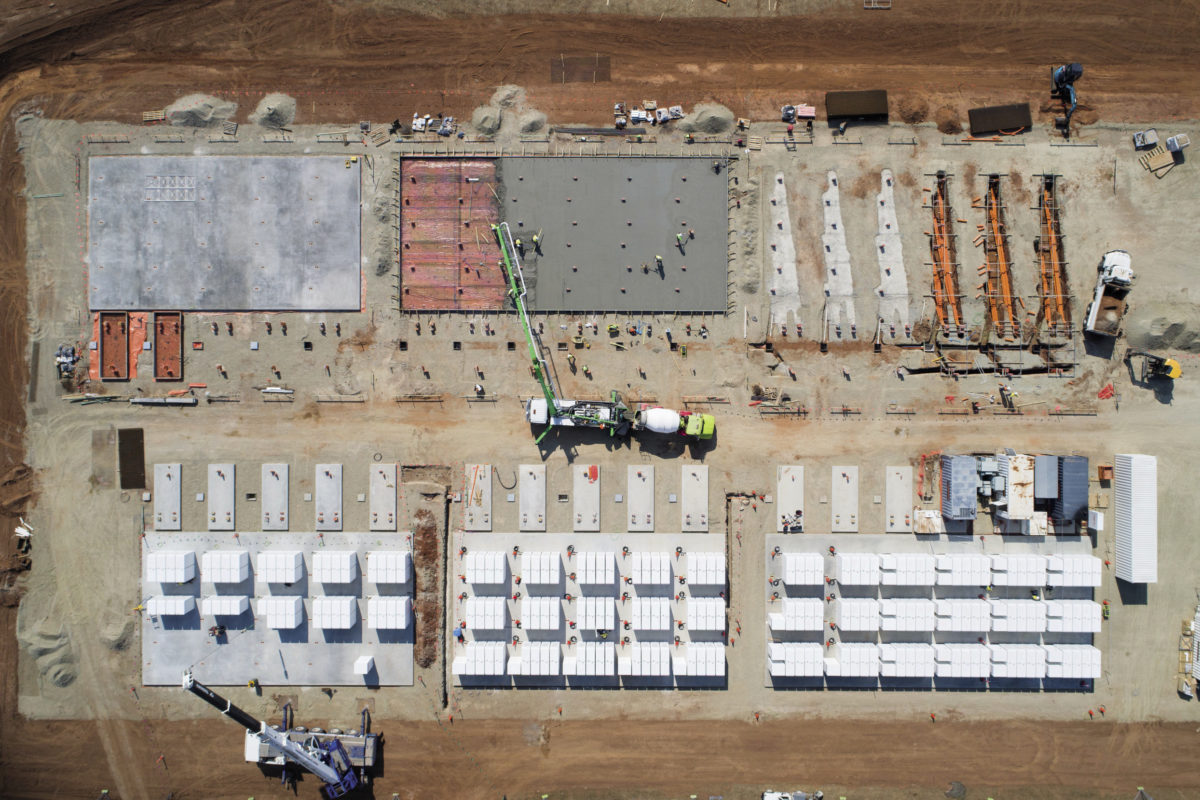A new report by Bloomberg New Energy Finance (BNEF) has revealed that the world is adding more energy storage capacity than ever – but reliance on policy support is delivering patchy growth.
Global installations of energy storage reached 1.17 GW in 2017, which is a 4.6% increase on 2016. However, 2016 posted growth of 61% against 2015, meaning sector expansion has slowed dramatically in the space of the past 12 months.
BNEF still expects sixfold growth in the sector by 2030, but warns that the industry “still needs training wheels” as it steadies itself across a global scale.
“[Storage] is currently a fragile market, reliant on policy support in most countries – and this makes growth patchy,” said BNEF’s head of storage analysis, Logan Goldie-Scott.
As increasing amounts of intermittent renewable electricity generation sources, such as wind and solar power are added to global grids, the importance of battery storage as a reliable and responsive means for storing this energy grows.
However, in many countries storage technology is still reliant on subsidy and often-erratic government support. The average price of a battery pack remains prohibitively expensive for many would-be distributed generation consumers, despite costs falling by 24% to $209/kWh last year.
Popular content
This brings storage technology costs closer in line with other grid resources, the BNEF report said, but adoption rates at scale continue to suffer from disjointed strategies to support and integrate such technology more effectively.
The leading storage nation in 2017 was South Korea, which installed 406 MW of capacity – more than any other nation. According to BNEF, South Korea’s policies “support adoption of batteries by offering incentives such as discounts on electricity rates for C&I customers who deploy systems”.
Last year was described as a transitional one for the U.S., as the nation’s utilities and regulators remained divided over how best to integrate, adopt and support storage technology, Goldie-Scott said. Across the Americas, which includes both North and South America, 522 MW of storage capacity was added, which was 3% less than the capacities added in 2016.
The EMEA region grew slightly, the data shows. In the U.K. recently there has been a push to develop new routes to commercialization for battery technology, led by the recently launched Faraday Institution, while in Sweden, Northvolt’s proposed battery cell gigafactory is targeting 32 GWh of cell production capacity by 2030.
Be sure not to miss this year's pv magazine Energy Storage Special – a 32-page publication exploring battery technology trends and challenges, European opportunities, end-of-life strategies and a whole lot more. The publication is out now, and will also be distributed at the Energy Storage Europe event in Düsseldorf, Germany, between March 13-15.
This content is protected by copyright and may not be reused. If you want to cooperate with us and would like to reuse some of our content, please contact: editors@pv-magazine.com.


1 comment
By submitting this form you agree to pv magazine using your data for the purposes of publishing your comment.
Your personal data will only be disclosed or otherwise transmitted to third parties for the purposes of spam filtering or if this is necessary for technical maintenance of the website. Any other transfer to third parties will not take place unless this is justified on the basis of applicable data protection regulations or if pv magazine is legally obliged to do so.
You may revoke this consent at any time with effect for the future, in which case your personal data will be deleted immediately. Otherwise, your data will be deleted if pv magazine has processed your request or the purpose of data storage is fulfilled.
Further information on data privacy can be found in our Data Protection Policy.